
State, Local, Tribal and Private Sector Policy Advisory Committee (SLTPS-PAC)
The State, Local, Tribal and Private Sector Policy Advisory Committee (SLTPS-PAC) will advise the President, the Secretary of Homeland Security, the Director of the Information Security Oversight Office (ISOO), and other executive branch officials on all matters concerning the oversight of the SLTPS Program.
Establishment: Created on August 18, 2010, by the President under Executive Order 13549, "Classified National Security Information Program for State, Local, Tribal, and Private Sector Entities" ( PDF Format).
Functions: To discuss program-related policy issues and advises on all matters concerning the policies relating to access and safeguarding of classified national security information by U.S. State, Local, Tribal, and Private Sector Entities, as specified in Executive Order 13549 and its implementing directive.
Membership:
- The Director of the Information Security Oversight Office - Chair of the Committee.
- An Official designated by the Secretary of Homeland Security and a representative of SLTPS entities - Vice-Chairs of the Committee
- Designees of the Heads of Department of State, Justice, Transportation, Department of Energy, Nuclear Regulatory Commission, Office of the Director of National Intelligence, Central Intelligence Agency, and the Federal Bureau of Investigation.
- Employees of other agencies and representatives of SLTPS entities, as nominated by any Committee member and approved by the Chair.
Reports & Notices
Fusion Center Reports
The U.S. Department of Homeland Security, in coordination with federal, state, and local partners, release the National Network of Fusion Centers Reports. These reports summarize and characterize the overall capabilities and performance of the National Network based on the results of yearly assessments.
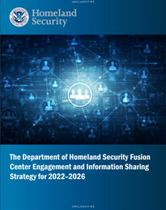
The Department of Homeland Security Fusion Center Engagement and Information Sharing Strategy for 2022–2026. This outlines a multi-year commitment to supporting our law enforcement and homeland security partners in states and cities nationwide, and describes how DHS enables information sharing vital to fusion centers’ missions and our national security
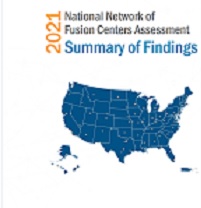 The 2021 National Network of Fusion Centers Final Report summarizes the findings on the capabilities and performance of the National Network of Fusion Centers between October 1, 2020, and September 30, 2021.
The 2021 National Network of Fusion Centers Final Report summarizes the findings on the capabilities and performance of the National Network of Fusion Centers between October 1, 2020, and September 30, 2021.
[also available: 2018, 2019, 2020- visit DHS Fusion Center Reports] [2017 ]2016 ][ [2015 ][ 2014 ] [ 2013 ] [ 2012 ]
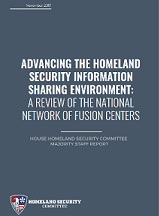 The House Homeland Security Committee released in November 2017, the Majority Staff Report "Advancing the homeland security information sharing environment: A review of the National Network of Fusion Centers"
The House Homeland Security Committee released in November 2017, the Majority Staff Report "Advancing the homeland security information sharing environment: A review of the National Network of Fusion Centers"
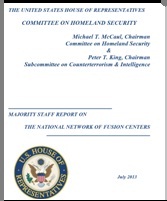 The U.S. House of Representatives Subcommittee on Counter-terrorism and Intelligence released in July 2013, the Majority Staff Report on the National Network of Fusion Centers
The U.S. House of Representatives Subcommittee on Counter-terrorism and Intelligence released in July 2013, the Majority Staff Report on the National Network of Fusion Centers
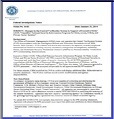
OPM NOTICE 14-01 - Changes to the Central Verification System in support of Executive Order 13549- January 31, 2014.
This Notice outlines new data fields relevant to security clearances for all SLTPS personnel.